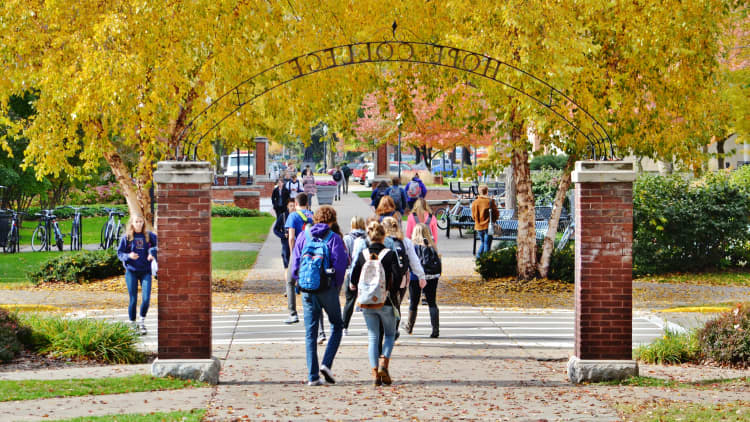President Joe Biden speaks about his economic plan at the Flex LTD manufacturing plant on July 6, 2023 in West Columbia, South Carolina.
Sean Rayford | Getty Images
Since the Biden administration’s first student loan forgiveness plan was rejected at the Supreme Court, it has been working on creating a new, legally viable relief package.
That debt cancellation could come as soon as this year. The alternative plan, which has become known as Biden’s “Plan B,” could forgive the student debt for as many as 10 million people, according to one estimate.
While Biden first attempted to cancel student debt through an executive order, he has now turned to the rulemaking process.
The U.S. Department of Education and the negotiators tasked with determining who will be eligible for the president’s revised aid have identified five groups of borrowers.
1. Those who owe more than they borrowed
Borrowers with outstanding federal student loan balances that exceed what they originally borrowed may be among those who qualify for the cancellation.
A person’s student debt can balloon for a number of reasons, said Nadine Chabrier, a senior policy and litigation counsel at the Center for Responsible Lending.
“Unfortunately, it is very common,” Chabrier said.
More from Personal Finance:
The best money advice I heard this year as a CNBC reporter
Op-ed: Money dates are great — but not on Valentine’s Day
Black Americans face ‘disproportionately steep hurdles’ to homeownership
Student loan servicers, the companies the Education Department contract with to service its debt, have a record of steering consumers into forbearances and deferments, she said. These options for struggling borrowers can keep loans on hold for many years, but interest often continues to accrue.
Scott Buchanan, executive director of the Student Loan Servicing Alliance, a trade group for federal student loan servicers, denied that the companies benefit by veering from the government’s orders.
“We are incentivized to meet the requirements that the government sets, which includes giving borrowers the benefits that the law provides,” Buchanan said. “We are audited, and get business or lose it based on meeting those standards.”
Advocates have also said the interest rates on federal student loans are too high, especially for borrowers from the 1980s, who have rates exceeding 8%. Current fixed rates today can be nearly as high.
2. Borrowers in repayment for 20 years or more
Those who have been carrying their student debt for decades may also benefit.
With many of the Education Department’s repayment plans requiring 20 years or more of payments, such stories are common. Millions of Americans over 60 are still paying off their student loans, research finds.
“There is both financial harm and psychological harm of being in debt for decades, especially when it feels like there is no hope that it will ever be repaid,” said Persis Yu, deputy executive director at the Student Borrower Protection Center.
3. Attendees of schools of questionable qualify
In its revised relief package, the Biden administration notes it is looking to include student loan borrowers who attended career-training programs “that created unreasonable debt loads or provided insufficient earnings for graduates,” as well as borrowers who attended institutions with high student loan default rates.
4. People eligible for forgiveness who haven’t applied
The Education Dept. already has a number of programs that lead to student loan forgiveness, and as part of its new aid package it is looking to identify those who may be eligible but just haven’t applied.
For example, the Public Service Loan Forgiveness program, signed into law by President George W. Bush in 2007, allows certain not-for-profit and government employees to have their federal student loans canceled after 10 years of on-time payments. In 2013, the Consumer Financial Protection Bureau estimated that one-quarter of American workers may be eligible.
However, the technical and often confusing requirements of the plan have acted as a barrier, experts say.

Student loan servicers also earn a fee per borrower per month, which advocates say discourages transparency around loan forgiveness opportunities.
“Instead of providing borrowers with access to the affordable pathway out of debt, decades of mismanagement and abuse have left these borrowers trapped in debt like hamsters on a hamster wheel with no way out,” Yu said.
5. Borrowers experiencing financial hardship
The Biden administration has also said it wants to forgive the debt of those experiencing financial hardship.
So far, it has proposed a set of factors that could identify struggling borrowers, such as those with student loan balances and required payments that are unreasonable relative to their household income, and people with high child-care and health-care expenses.
It also said that financial hardship could be based on other debt obligations, disability, or age, among other factors.